Further investigation into the iPhone in hand signal issues
by Justin Horn on Jun 24th, 2010 @ 8:12 pmI looked into how the bumper case affected the signal loss problem earlier. It helped lessen the signal loss, but still lost a couple bars. I’ve been thinking about this issue all day and decided to dig a bit deeper to see what I could find.
UPDATE For those of you that don’t have this issue, my best guess…I wrote earlier today in my bumper case post:
I then tested in another room with less electronics. In this room I started with a strong signal of 5 bars. This time around, with or without the bumper, the signal held pretty much at 5 bars. This may explain why some people don’t seem to notice this issue. If you have really great AT&T service where you live, the in hand signal drop may not be as noticeable.
Watch the video of this phenomena.
Gruber agrees with this and here is my post explaining it in more detail.
I definitely have the signal loss issue and more specifically, the left hand covering the bottom left corner problem. Engadget points out that this is where the Bluetooth / WI-FI / GPS antenna meets the UMTS / GSM antenna. This is true, but there is also another meeting point at the top of the phone as seen in the antenna diagram. Holding the top of the phone doesn’t produce the same effect as the bottom left.
I decided to take it a step further to see if the 2 antennas were “electrically separate”. I pulled out my handy multimeter and got to measuring. I started as an electrical engineer in college, but later switched to computer engineering, so if anything I’m saying sounds off, let me know @justin_horn.
UPDATE @armadsen tweeted the following:
DC resistance measurements are not valid for antennas, it’s RF impedance that matters. Much more difficult to measure.
Guess that pokes a whole in this theory?
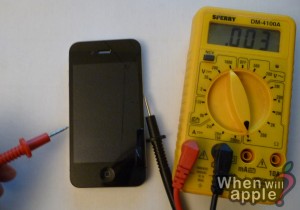
No resistance between the two antennas
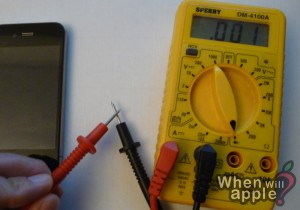
Control showing no resistance when shorted
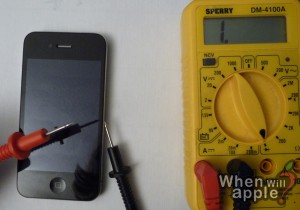
Control showing 100% resistance when open circuit
As you can see from the pictures above, there is basically zero resistance between the two antennas. This means we aren’t bridging “the gap” and shorting the two antennas because they are already connected. Ruling out this bridging effect explains why the top gap doesn’t suffer the same issue.
UPDATE Continuing to test this, it’s hard to argue with the bridge theory. I just place one finger (you know which one Apple) right on the separator and the signal starts to drop. What I don’t get is how this doesn’t effect the upper gap, theoretically it should be the same right? Check out Marco Arment’s solution, spoiler alert: masking tape.
It’s obvious something is going on here, so next I checked out Daring Fireball. John Gruber doesn’t have the issue (lucky bastard), but linked to an article by Jim Dalrymple of The Loop who adds:
According to people I’ve spoken with, it could be that moisture from your fingers is causing the iPhone 4 to believe that the antenna is receiving interference and losing its wireless signal
So the best I could come up with to test this is the good old rubber glove test!
Rubber glove, same result. This was only testing the moisture idea, but I’m thinking it has to do more with the fact that the human body is a conductor. Somehow this conductive nature of the human skin is sapping the signal or just disrupting it somehow.
I remember back in olden days, touching rabbit ears for an analog TV broadcast actually improved the signal, but with the iPhone 4 it’s worse. I’m not really sure why, but I have a few guesses:
1) It doesn’t work the same for digital signals
2) Cell phone frequency range reacts differently to human conductivity than TV (analog or digital)
3) iPhone is a transmitter and a receiver, not just a receiver like a TV
The rubber glove I used was thin enough that it didn’t stop the flow of electricity, so to test this I needed something thicker. I decided it was time to bring out the big guns…The Ove Glove.
This test produced the best results with zero signal loss, even trumping the results I got with the bumper earlier! Another plus, the Ove Glove is half the price of the bumper [Buy your ove glove on Amazon].
Even though I’m not sure why human conductivity would weaken the signal, after this last test I believe it’s cause. At this point I really don’t think there is anything Apple can do to fix this, so go buy your Ove Gloves!
Follow me on Twitter @justin_horn
View 12 Comments
Antenna Issue, Featured post, iPhone 4, Speculation
Recent Post
- More details on the iPad mini new multitouch feature
- iPad Mini predictions
- Zune still the butt of jokes, this time on the Simpsons
- AT&T LTE No Service: Too many LTE iPhone 5 users?
- iPhone 5 cellular usage while on WIFI bug affects AT&T users as well
- Tim Cook responds to iOS 6 Map app issues in public letter
- iPhone 5 screen vs iPhone 4: Really close up
- iPhone 5 line at 5th Ave Apple Store (Updated 11PM)
Featured Post
Comments
Sorry, the comment form is closed at this time.
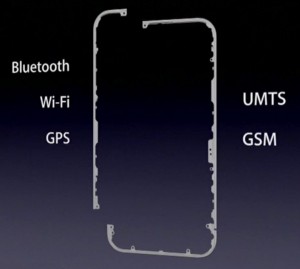
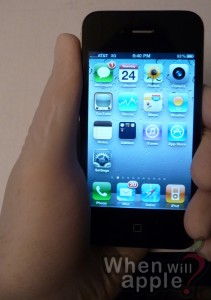
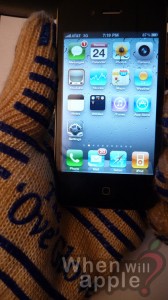
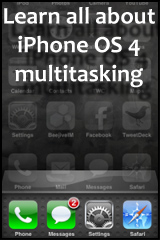


It’s the wifi. I shut off wifi and no problem. Turn on wifi and hold in hand and it’s done with… It’s the wifi antenna on left side…
I’ve tried with WI-FI turned on and off, same thing? I have a feeling there is some defect and there are different variations of the problem.
With the gloves, think capacitance (as in capacitive coupling between the iPhone and your body). You basically have two conductors (your body and the iPhone) separated by a dielectric (the glove material). To minimize the coupling, you want to decrease the capacitance, which basically means increasing the spacing between the iPhone and your hand (this is why the ove glove works better — it’s thicker than the latex glove).
A moderately thick case (say, one as thick as your ove gloves) should also work.
As a test, you can try putting on 3-5 latex gloves on top of each other (which increases the spacing between your hand and the iPhone), and then doing your signal test.
@AJ Yeah, even wearing the gloves the iPhone touchscreen still works, so I knew it wasn’t preventing anything but sweat.
Pick up a book on antenna theory. Antennas must be of the same wavelength as the signal you’re Tx/Rxing. When you touch the antenna (or the case), your body becomes a part of the original antenna, making it an incorrect match for the wavelength (frequency) you are considering. Anything other than an exact match = signal degradation.
You know how some people are more static-y than others? Is there that one guy in school that makes everything ferrous rust? I think the almost negligible electro-magnetic characteristic that each of our body holds is different – thus these tests will not be uniformly controlled. Some lab needs to take 100 or so iPhone4s, one hand each from two people, and start from there.
Just buy the Google nexus
Simple….
D’oh! I knew I shouldn’t have “upgraded” my 3GS. I wonder if there is a loophole in the AT&T contract that will allow me to jump to Verizon since the Apple/AT&T hardware is effed. I’m so tired of 3 years of Apple/AT&T crap. I just want to jump to an Android at this point but don’t want to get hit with the termination fee.
[...] the way. At this stage, apart from taping your phone, getting a case, or as one researcher found, wearing oven gloves, perhaps the only real fix is to not buy an iPhone? AKPC_IDS += "6302,"; email article [...]
i agree with mike k. and aj. the antennas must be matched with the signal that they are transmitting.
your hand is producing more capacitance then acting as a conductor. stray capacitance (even going down into the nF range) will have an impact on how the antenna is tuned and is putting the entire TX/RX circuit out of whack.
with high frequency circuits (in this case, from 850MHz-1900MHz (GSM) to 2.4GHz (WIFI)) proper tuning is critical.
so, when you bridge the connection, you have added an additional capacitor and additional length of antenna. this changes the RF impedance of the antenna, and imbalances the circuit. think speakers and amplifiers. the antennas impedance (the ‘speaker’) needs to be matched to the impedance of driving circuit (the ‘amp’).
hey let’s go buy a $400 phone and be required to wear an oven mitt to use it. Really people??! get off Apple’s rod already and realize this phone is junk! And for Consumer Reports to state DUCT TAPE is a viable solution…….riiiight.
Don’t waste your money on Apple…Go Android.
[...] in cellular reception.” Lefties: you’re out of luck. One researcher found that oven gloves seem a safe way to hold the thing. And so on and so forth. One Ph.D. in wireless network planning, Richard Gaywood, confirmed the [...]